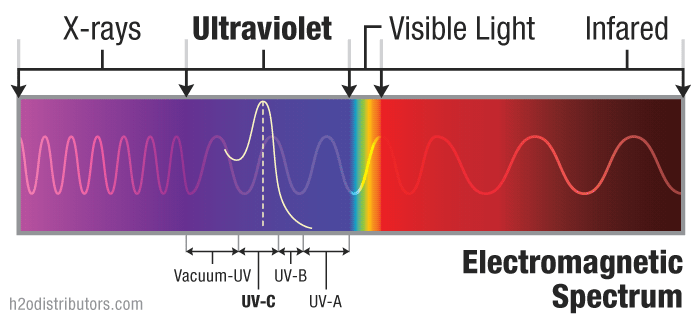In this pandemic time, UV light is one of the most used products, especially in controlling microorganisms. It has a unique frequency just between the visible light and the X-rays. A UV light of typically low frequency is not visible by the naked eye, while a higher frequency UV light can be used on humans for skin tanning. There are many types of UV lights. These types include A, B, C, and vacuum-UV. UV light is mostly used for cleaning purposes, but if a person is exposed to an unhealthy amount of it, the light may cause skin damage or, even worse, cancer.
It is also used in fishponds to control the growth of algae and bacteria. These types of problems are a significant setback for people who farm fish, but with the help of UV, the problem can be eradicated from the root up. Mainly the UV-C is what makes water purified by eliminating fungus, bacteria, and other microorganisms.
How does it work?
The UV light has a characteristic of being a germicide. This means that it can break small organisms with great ease. This is because the UV light is an electromagnetic ray. This, in addition to their frequency, makes them a great contender for killing germs and putting a stop to ever-increasing bacteria and other small-scale viruses. Usually, there are three standards of a ‘UV Dose,’ which can be used internationally. These are NSF Standard, Industry Standard, and US public health (EPA) Standard. These are important because the most intense the dose is, the greater the results would be. But indeed, there are side-effects that people need to bypass. For which, the three standards are used. According to the intensity of dose, the EPA standard is the most intensive, while on the second-most intensive comes the Industry standard. This makes the least intensive standard to be the NSF Standard.
The UV light is notorious in the killing of toxins such as Vibrio Cholera, Poliovirus, Rotavirus, and Coxsackie B5. All of these bacteria can be killed at a particular frequency or dose, which best suits the killing of such pollutants.
Components of sterilizer
There is a vast array of UV sterilizers that people can buy. These UV sterilizers may differentiate upon the type of bacteria to be contained, the size and power of the bulb, and the frequency of UV. You can log onto www.carnation-inc.com/collections/sterlizier-machines to check out a range of sterilizers, to select one which fits your criteria the best
First and foremost, you need to look at what type of viruses are there for which a UV sterilizer is being used. Sometimes an ordinary sterilizer may not be equipped to handle difficult and harsh contaminations. Similarly, the dosage of UV light is also critical to the situation. Viruses that have sizeable molecular structures are hard to break down. Moreover, they require a greater amount of dosage of UV to break the form down and stop it from redeveloping. For this, the dosage must be given importance when catering to stronger contaminations. The size and power of the bulb are also crucial to the situation. Usually, bulbs with greater control and size become weak and ineffective in a short period. For which these bulbs must be replaced twice or thrice a year depending on their size, power, and usage.
![[OL TEH BLOG]](https://solteh.net/wp-content/uploads/2020/01/cropped-06f943d4-cape-town-1.jpeg)
